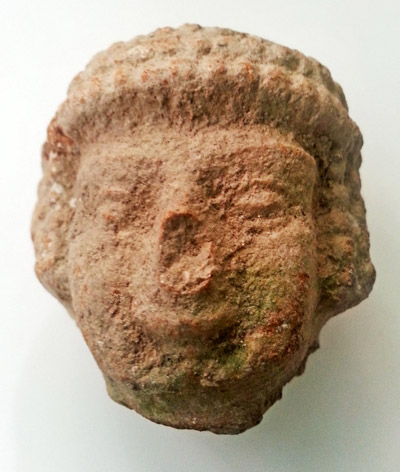(
Israel Antiquities Authority)
Itai Halperin, 8, was visiting the archeological site in Beit Shemesh with his family when he found an interesting object on the ground. The family immediately handed over the object to the Israel Antiquities Authority.
At a meeting with archaeologist Alexander Glick, Itai learned that he had in fact found an artifact of historical significance, identified as the head of a statue of the goddess of fertility. As a reward, Itai will receive a certificate of appreciation from the Israel Antiquities Authority and he and his classmates will be invited to take part in an archaeological dig. Itai recently saw an Indiana Jones and hopes be like him when he grows up. Finding the statuette was a dream come true.
 Head of a statue of the goddess of fertilityCopyright: Courtesy Israel Antiquities Authority
Head of a statue of the goddess of fertilityCopyright: Courtesy Israel Antiquities AuthorityAlon de Groot, an Israel Antiquities Authority expert in the Iron Age period, said, "Such figurines, in the form of a nude woman symbolizing fertility, were common in the homes of residents of the Kingdom of Judah from the 8th century BCE to the destruction of the kingdom by the Babylonians in the days of Zedekiah (586 BCE)." Beit Shemesh is mentioned in the Bible as a city of the tribe of Judah, and finding the artifact near a residential district from the First Temple period in fact helps reinforce the identification of the site as having been under the control of the Kingdom of Judah.
Beit Shemesh is located southwest of Jerusalem, in the foothills of the Judean Hills. Excavations of the tel indiate that it was the site of a large city during the First Temple period, serving as a regional industrial and commercial center. The city was surrounded by a wall and comprised both residential and public buildings, as well as warehouses and an impressive water system. The Assyrian king Sennacherib destroyed Bet Shemesh in 701 BCE, and the final destruction of the site was carried out by Babylonian King Nebuchadnezzar in 586 BCE.